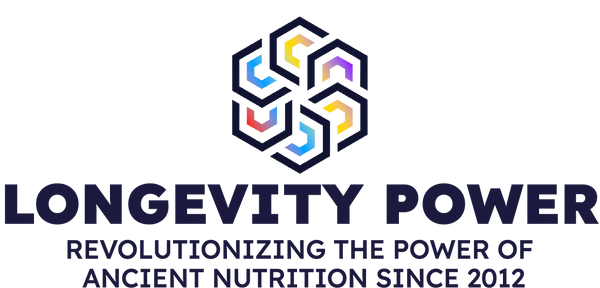
Make sure you're don't overlook ingredients you didn't know don't work for you (I know I did!)
This list won’t contain the more obvious baddies like high fructose corn syrup, hydrogenated vegetable oil and sugar. Instead, you’ll find a list of ingredients you may have let slide into you ‘healthy’ choices but will want to seriously reconsider.
I’m not one to be dogmatically for or against foods, but if you need reassurance that there are ingredients that most likely are sabotaging your health potential (or may just be flat out causing you dis-ease) then please read on…
10. Lectins

Plant lectins refer to a suite of proteins that cause inflammation. Every body varies in sensitivity to lectins. You can brave a lighter dose of lectins (which for sensitive bodies is still enough to increase leaky gut, cause joint pain and lead to chronic health problems or just prevent them from healing) from nightshades, including potatoes, tomatoes and cayenne, and seeds, including almonds and quinoa. And you can take on a big dose from beans and grains, but the negative effects will still happen whether you notice them or not. Gluten is a type of lectin. Even the most wholesome organic farm to table cuisine can be rich in plant lectin ingredients. Do more research on lectins (there’s a lot out there) and consider an elimination diet abstaining from these for a while, then one by one add some back in and see how you react.
9. Not So Healthy Whole Grains (Gluten!)

Gluten and its related cousin proteins are found in cereal grains like wheat, rye and barley and are naturally there to prevent the grain from being overeaten by pests. Yep, gluten and lectins are nature’s pesticides AKA chemical warfare, which is why they get such a bad rap and are now known for causing gut permeability, inflammation and immune system issues, including and especially in children age 0 to 100.
8. Soy In Many Forms

Soy protein, soybean oil, edamame: An inflammatory and allergenic party in your mouth. Some people do better with traditional fermented organic soy products like miso.
7. Corn

Just because it’s called maize doesn’t mean it’s different from the mega crop. Corn is a cereal grain too. It doesn’t contain gluten, but it does contain mold (mycotoxins), lectins and lots of carbs (sugar!), and may exacerbate immune and blood sugar issues.
6. High Omega-6 Seed Oils

The latest research shows that the human body and brain thrive on fats from animals and plants rich in fresh saturated fats, monounsaturated fats, polyunsaturated fats called omega-3 fatty acids, and a few other breeds of fatty acids. Most modern industrial plant oils are dominant in the one polyunsaturated fat we need very little of: Omega-6 fatty acids. These oils include safflower oil, sunflower oil, ‘vegetable’ oils, canola oil, soy oil, corn oil and trans fats. These oils are better used as machine lubricant and biofuel rather than human fuel. They are so cheap compared to premium healthful fats that most natural food companies end up using them as major ingredients in their recipes, unfortunately.
5. Most Gluten Free Grain Replacements

Most ‘Gluten Free’ foods are carbohydrate (sugar!) bombs rich in potato flour, corn and tapioca starch. Not much of an upgrade. Some gluten free blends have more decent ingredients (coconut flour, gelatin powder, etc.)
4. Unlabeled MSG

MSG can still cause brain fog even when hidden in the following suspect ingredients: autolyzed yeast, hydrolyzed protein, hydrolyzed vegetable protein, sodium caseinate, yeast nutrient, yeast extract, Torulo yeast, natural flavoring, or glutamic acid.
3. Grain Fed Animal Products

Occasional organic pork and chicken (almost always fed mostly grains like corn, soy and wheat) might pass, but don’t make those the foundation of your animal intake. Grain fed animals have a disturbed fatty acid profile, among other problems. Instead fuel up on meats, organ meats, animal fats and bone broths made from 100% grass fed and grass finished beef and lamb, truly wild (not farmed) fish and wild game.
2. Moldy (mycotoxin containing) Foods

Many herbs, spices, seeds and even superfoods like maca root can be contaminated with mycotoxins, especially in their raw form. Do some digging to find the good stuff that is tested to be low in toxic fungal residue. Our company, Longevity Power, specializes in superfood and herbal extracts like adaptogens that don’t contain mycotoxins, help you thrive amidst stress, perform better at what you do and curb cravings as you up-level your diet strategy.
1. Hidden Excess Carbs

Specifically ‘net carbohydrates,’ which include all simple sugars and starches but does not include pure fiber and nutritious polysaccharides. Like lectins, everyone has their own dynamic sensitivity to carbs that can change over time. In general, lowering carbohydrates that are replaced with high quality fats is a better long-term strategy for health and energy. Excess carbs can feed or even cause many of the modern diseases including heart disease, cancer, stroke and diabetes. They may exacerbate the lesser known underlying issues of gut dysbiosis and fungal, viral and parasite loads. You may even wish to give nutritional ketosis a try or a GAPS diet or AIP diet plan. I personally don’t feel great on foods like rice and nuts (all rich in carbs), but thrive on low carb options such as grass fed beef tallow covered cauliflower (a truly healthful low carb replacement if I do say so myself!)
I could list 100 more suspect ingredients, but I really wanted to give you a concise list that was pertinent and thought provoking.
Do you think this was a great top 10 list? What would you add? Let me know in the comments section below.

May you be empowered with this information and thrive! Cheers to your greatest health!

